I’ve been training for it, and it finally came. This past week, my family and I conquered the Cape Scott Trail and spent two glorious days on some of the most beautiful and wild beaches on Vancouver Island (that’s right Tofino, you’ve got competition).
I fell in love with the stunning beaches at the end of the Cape Scott Trail, the first time I hiked it approximately 15 years ago (and then again about 12 years ago), and I’ve been trying to get back there ever since.
Turns out it’s not easy to convince people they want to backpack 17 kilometres (10.6 miles) over some pretty rough terrain to sleep in a tent and sit on a beach—no matter how stunning the view.
But I finally did, and it was spectacular!
ERIC LAKE
Every amazing adventure happens somewhere after the blacktop ends, and this one was no different. There is a moment along the highway from the town of Port Hardy to the community of Holbert when the pavement ends and the gravel logging road starts, and you can feel the adventure unfolding!
You hit this point after driving about 6 hours from Victoria, and you still have another hour and a half along a potholed and twisty logging road before you reach the Cape Scott Provincial Park parking lot.
This drive is actually part of the adventure!
It isn’t really possible to do the drive and then hike all the way to Nels Bight—the main beach that most people camp at—in one day, so we spent our first night at Eric Lake.
Eric Lake is about 3.3 kilometres (2 miles) from the trailhead. It’s a beautiful spot in the forest and contains about 11 tent pads.
The only real downside to staying here is the mosquitoes, but we found relief down at the lake. Pretty much all the hikers staying at the Eric Lake campsite spent the evening avoiding the pesky critters lakeside—taking care to keep our COVID 19 distance!
THE TRAIL
The first real day of our hike dawned early. My twins are only 9 and have short legs, so we knew we would need lots of time to make the hike. According to the book I have about Cape Scott, the average time to make the hike is about 5-6 hours, but we suspected we would need more—and we were right!
Part of the problem was that the moment that we woke up the rain started. Packing up in the rain sucks, and by the time we got underway, we were already soaked!
I would just like to add a note that while my hiking boots say that they are waterproof, they were definitely NOT west coast waterproof!
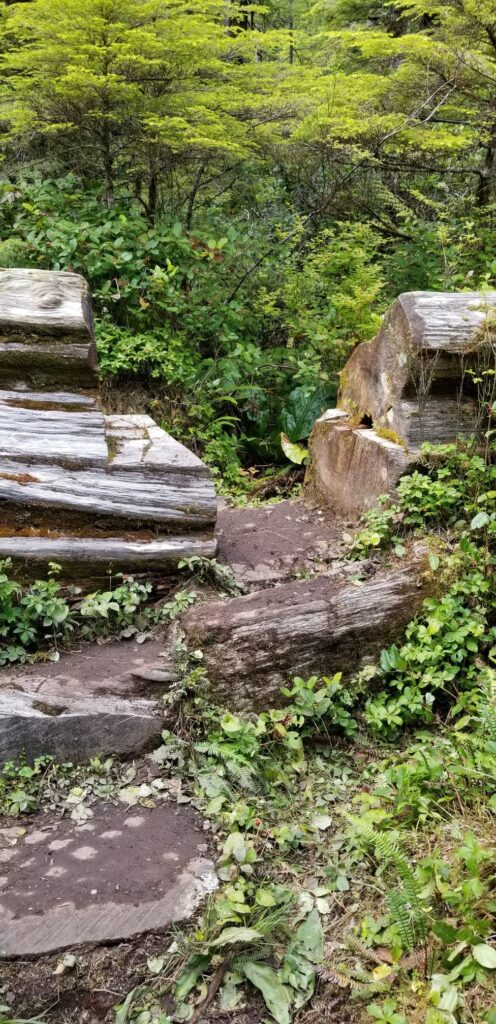
Trail cut through giant log 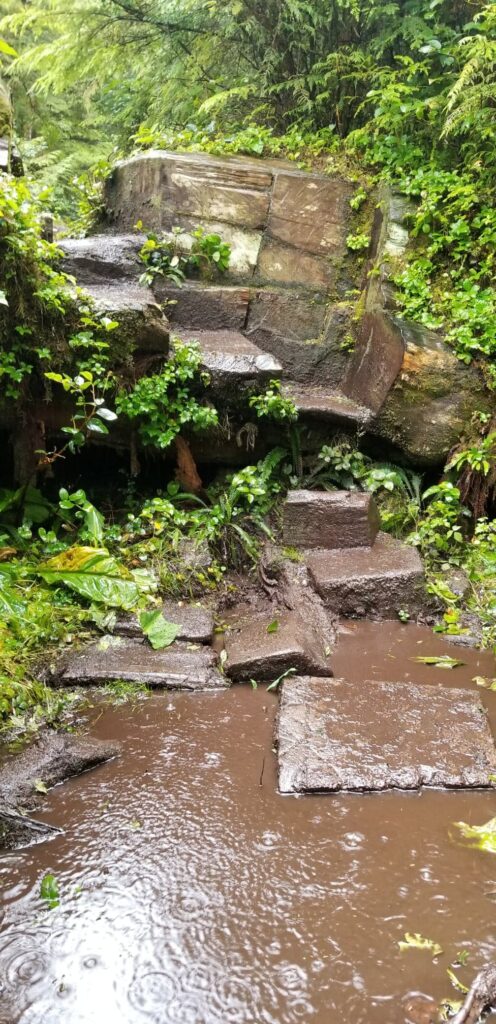
Steps cut into giant log 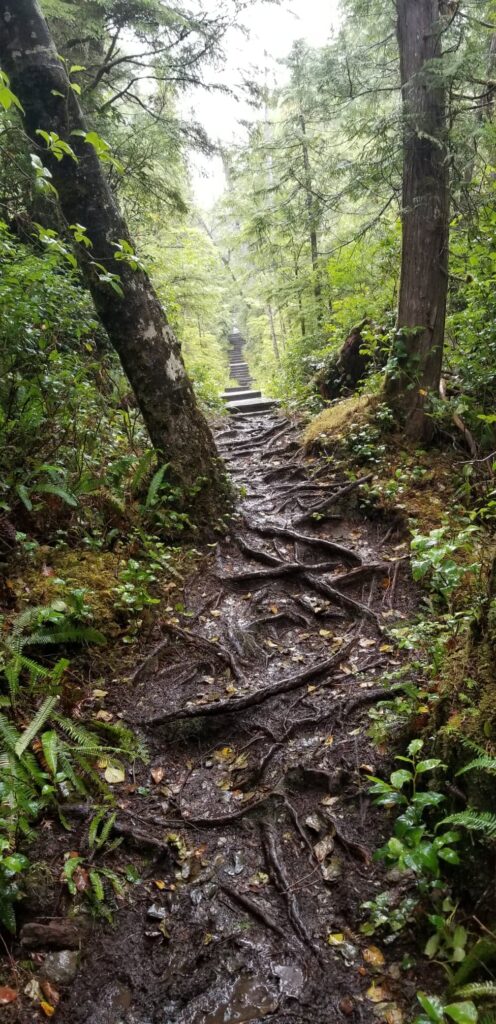
Roots and puddles 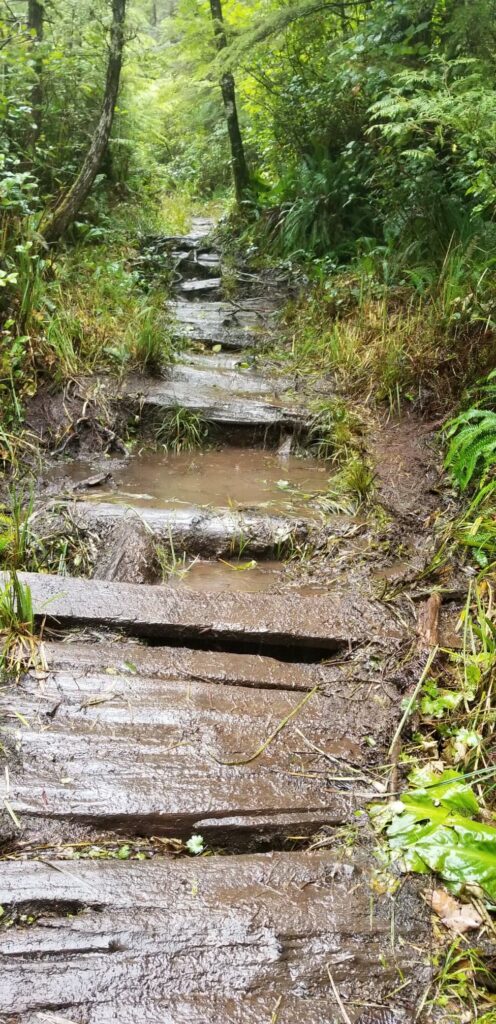
Tricky trail
The Cape Scott Trail has a reputation for being muddy, and it didn’t disappoint this time. And, while I’d like to say that the hike was amazing, it was a in actual fact a misery.
But traversing the mud bogged trail is part of the true experience—so I had to embrace it.
My memory of the trail had NOT served me correctly. I remembered a much easier version of the trail from my first two trips—maybe that’s because I was lucky and both times the trail was dry.
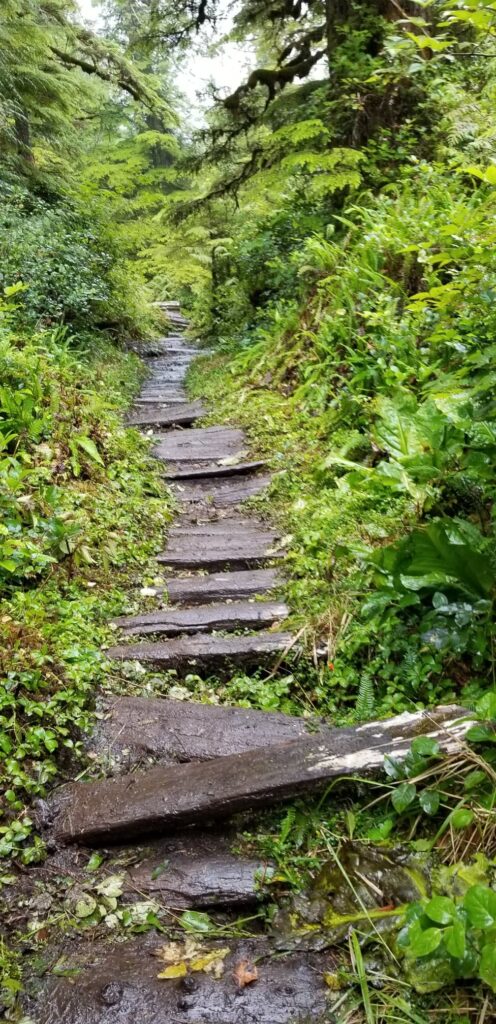
Trail to Cape Scott 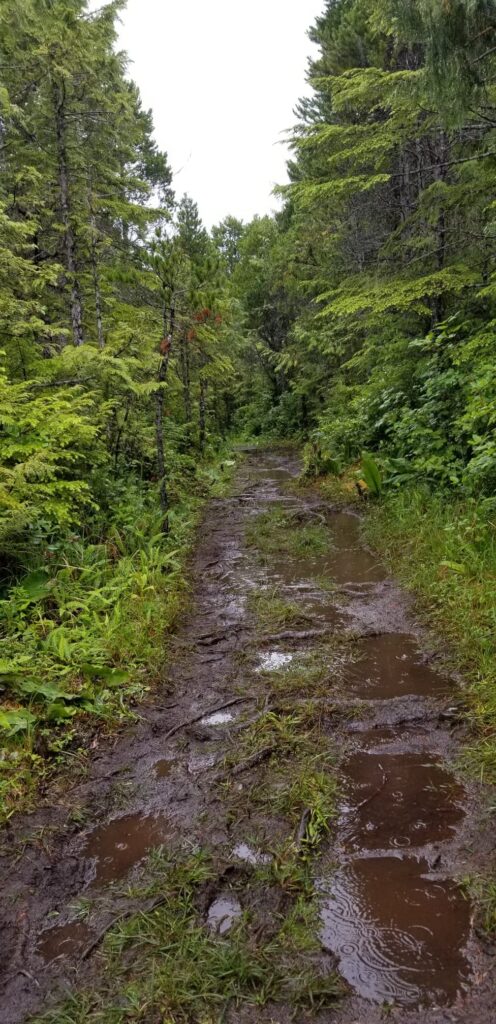
Puddles and mud 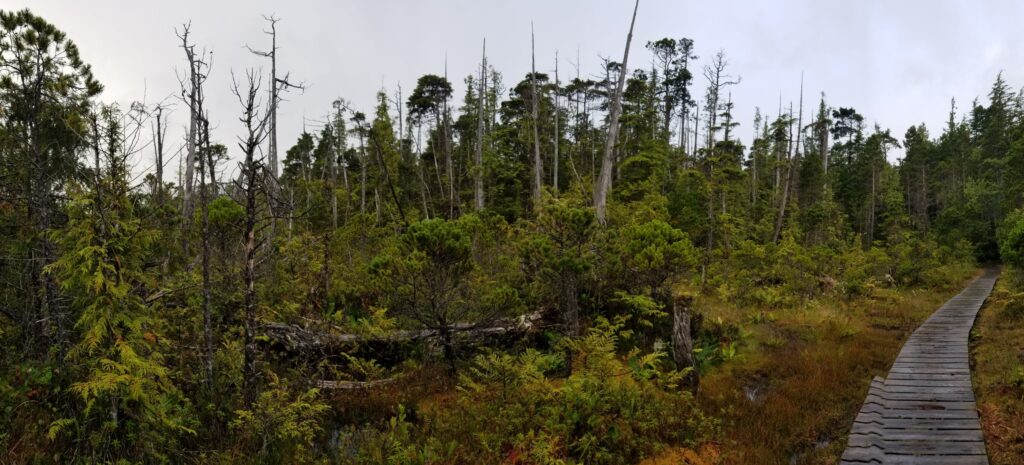
Board walk through forest
The trail is less hilly than the popular Juan de Fuca Trail (home of Mystic Beach and Bear Beach) at the opposite end of Vancouver Island, but it still offers some challenges. These include giant logs to climb over, uneven boards to navigate, and knee deep mud puddles to traverse.
Oh, but I promise it’s all worth it!
NELS BIGHT
Nels Bight is the beach that most hikers choose to stay at. It has the easiest access to the fresh water and to the pit toilets. It’s also close enough to make a day hike to the tip of the island doable.
It isn’t the prettiest of the beaches, and, because of it’s popularity, driftwood for making a fire can be a little scarce. But even if this is the only beach you see the entire trip, it’s still worth it.
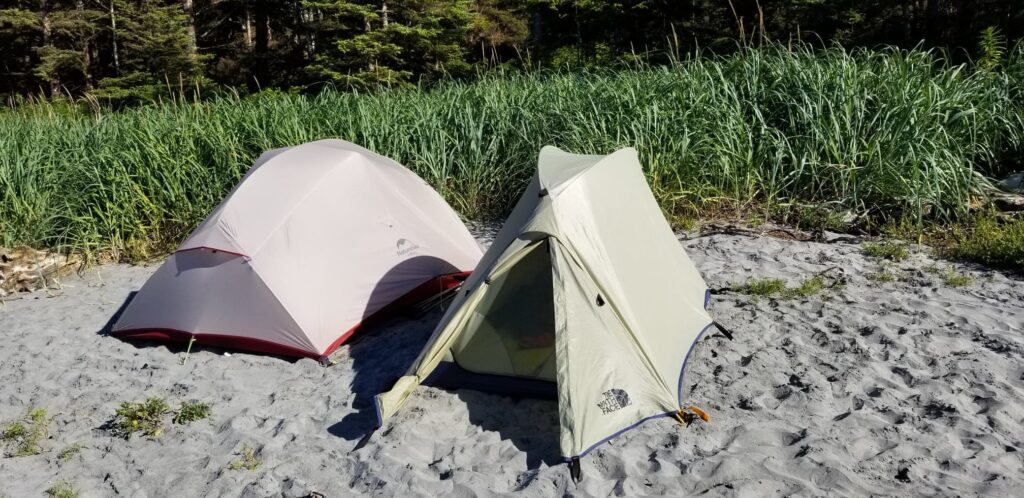
The sand is so soft that I pretty much didn’t wear shoes from the moment I took my hiking boots off until I put them back on to do the next hike.
We camped on Nels Bight for three glorious nights, and the weather couldn’t have been better. It might have poured rain during the hike in, but while we were on the beach, we enjoyed SUNSHINE! Cape Scott isn’t known for being warm, but it was for us.
The bright sunshine made playing in the water refreshing, and we didn’t have to worry about getting a chill—the ocean around here isn’t exactly tropical!
On the last night, I couldn’t help but wish we could stay longer. I wasn’t ready to leave. But, alas, we were running out of food, and the adults amongst us needed to go back to work.
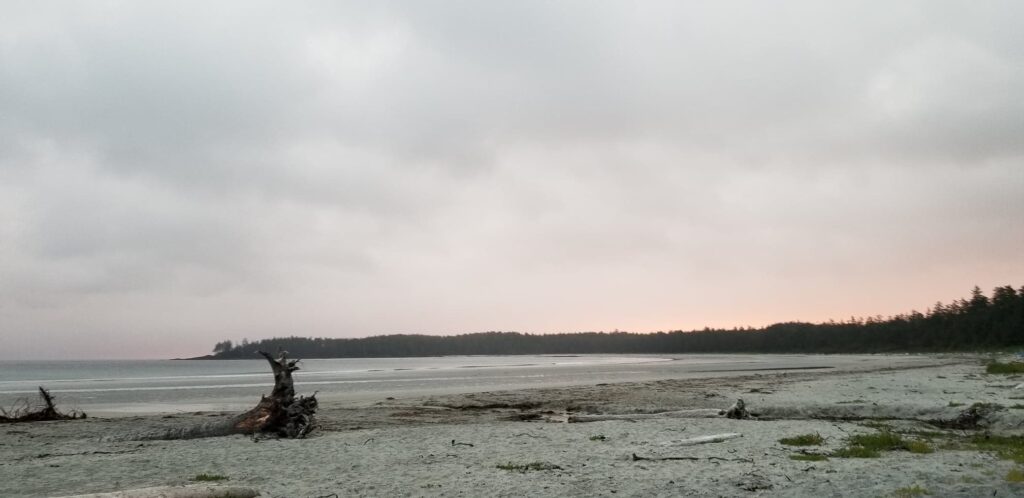
Camping at Nels Bight—or any of the beaches in this area—has a few challenges. One of them is the epic hike to get here, but the fresh water can also be a bit tricky. There is lots of fresh water, you don’t have to worry about that, but it comes from streams that are running through decaying old growth forests. It is literally swamp tea, and it looks like it. Even after it’s filtered, the water still has a brownish tinge to it. It tastes fine, but it does mess up your water filter pretty good.
Oh, and the stream has a distinct decaying odour to it. Which, luckily, you can only smell when you’re right at the stream. It’s tempting to think it’s the rotting seaweed, but nope, it’s the water.
EXPERIMENT BIGHT
The next beach over from Nels Bight is Experiment Bight, and it shouldn’t be missed. If I make it to Cape Scott again, I might try to push through one more kilometre of agonizing hiking to stay on this little strip of paradise.
The waves are bigger. The water is almost a tropical blue. And it doesn’t have the “crowds” that Nels Bight has.
It also doesn’t have a pit toilet and the freshwater is a little harder to access. But paradise often means a little sacrifice.
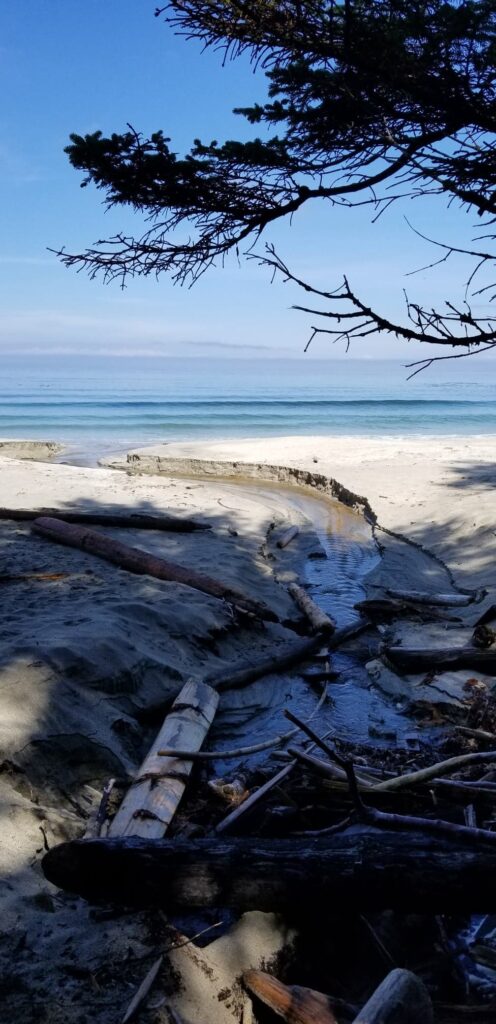
First glimpse of paradise 
Experiment Bight 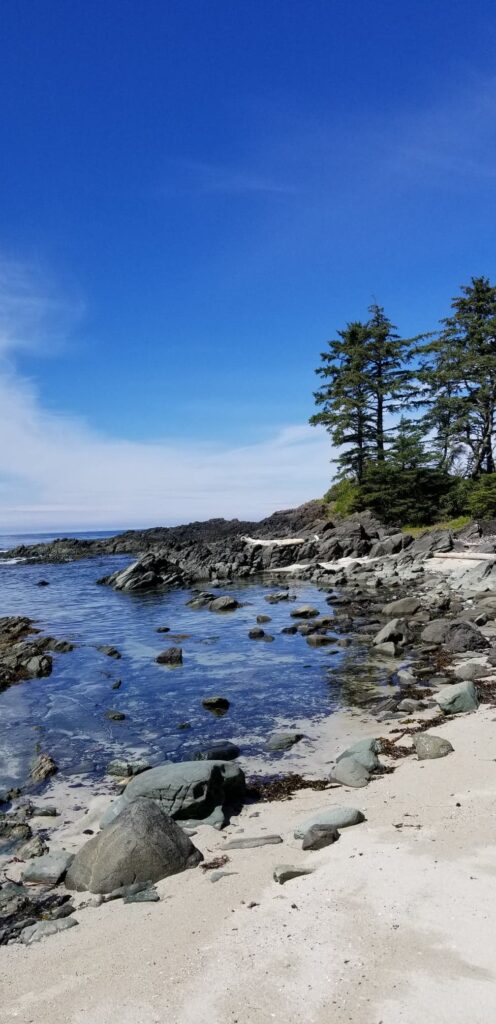
Experiment Bight 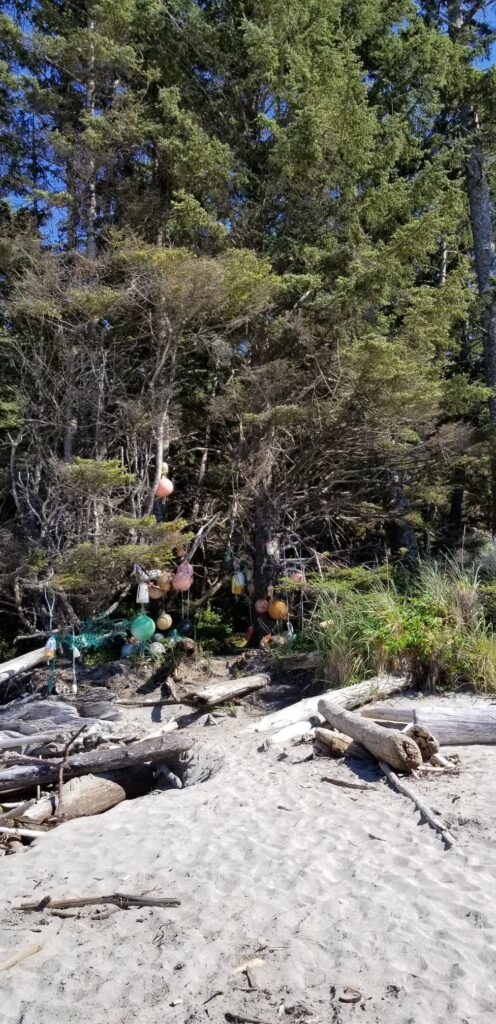
Trailhead markers
On the first day at Nels Bight, a group of us made the 14 kilometre (8.7 mile) round trip to the lighthouse and Coast Guard station at the very northern tip of Vancouver Island. And Experiment Bight is the first beach on that hike.
I could have stayed there all day. And I did return the next day with my family to play in the waves and enjoy paradise!
GUISE BAY
The next beach is Guise Bay. And it might be the prettiest beach of all.
It looks different from the other two in that it has grass covered sand dunes along the edge of it. My son thought that maybe he would find some hobbits living there.
There is also a neat feature where someone—or maybe many someones over the years—created a driftwood fence along the top of the bluff.
Weather can change quickly at this end of the island. Shortly after arriving on Guise Bay the fog started rolling in, and when we emerged from the trees at the lighthouse about thirty minutes later, everything was enshrouded in fog.
There were a few hardy souls that had made the trek all the way to this beach with their heavy packs and were camping here. It would be a truly spectacular beach to stay on.
I spent some serious time just enjoying the stunning beauty, before heading on towards the lighthouse.
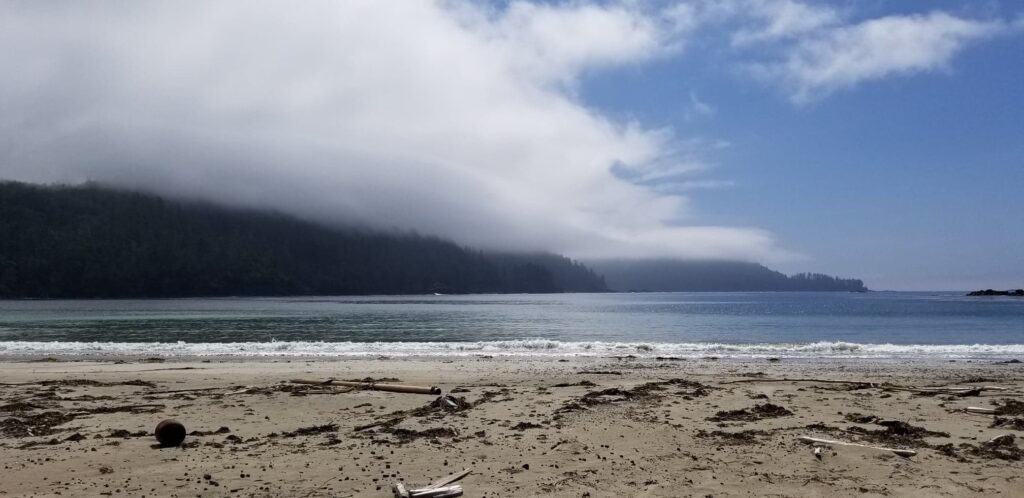
CAPE SCOTT LIGHTHOUSE
Hiking the trail to the Cape Scott Lighthouse is like walking through history. The trail is actually a wooden road that was installed by the Royal Canadian Air Force when Cape Scott was turned into a radar station during WWII.
Naturally, the road is very degraded, but it is still there, and you can walk on the boards those brave men laid.
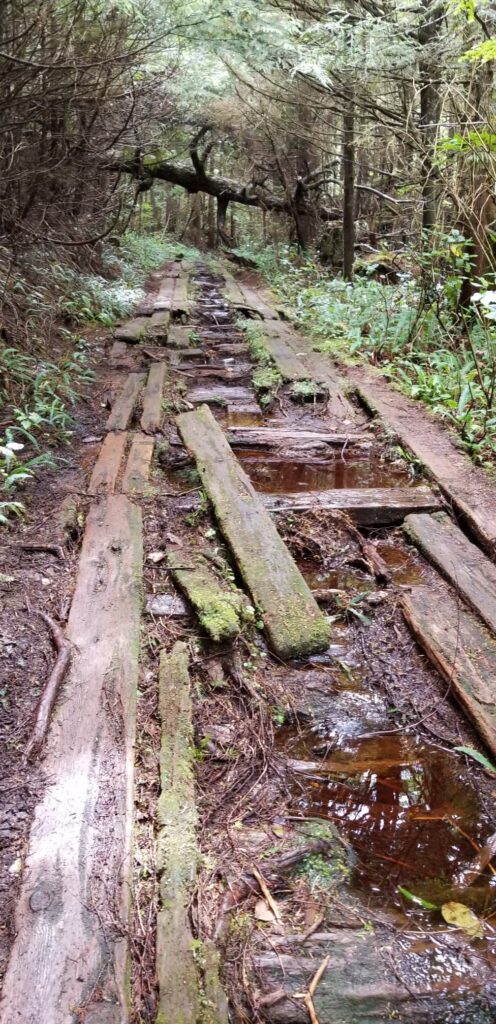
Wooden road from WWII 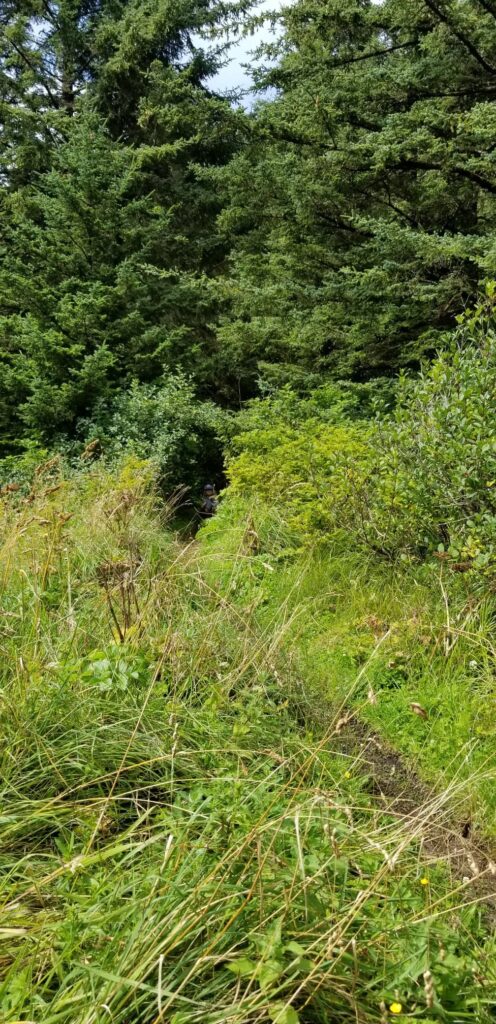
Trail through tall grass 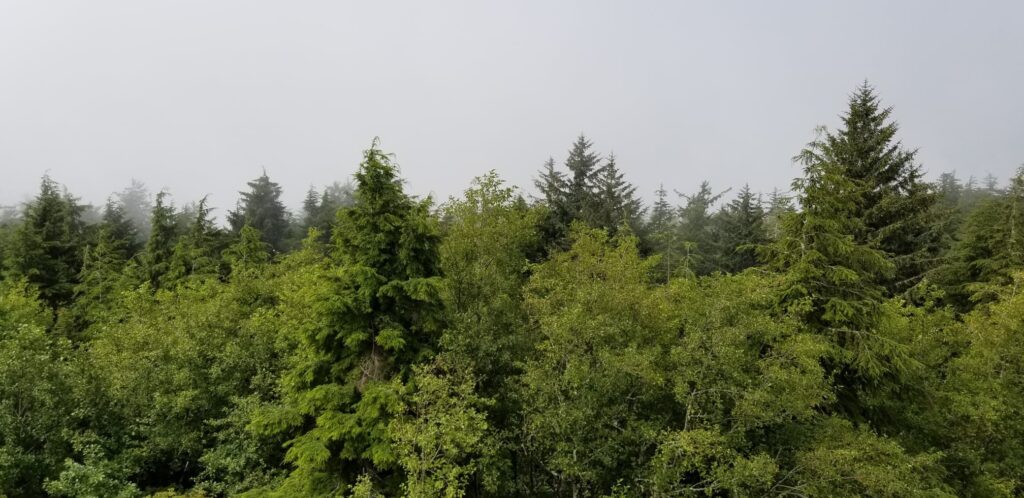
View obscured by fog
I do need to give one little piece of caution to the lighthouse lovers out there. Calling the light at Cape Scott a lighthouse is a bit of a misnomer. It is actually a light next to a house.
Somehow, I didn’t manage to take a picture of the light, but you can find one here .
The first time I made the trip, I didn’t know. It was quite a shock to find a light on a metal frame beside a 1950s style house instead of a romance inspiring lighthouse.
INSPIRATION
I never hike anywhere without some part of my brain trying to work out where the adventure is going to fit into my writing. And while I don’t have a specific book in mind for the Cape Scott Trail, there is too much beauty, romance, and potential for perilous situations for this trail not to end up in a book.
Just the intensity of my emotions while I struggled in the rain on the muddy trail, the feeling of paradise on the beaches, and the history have fueled my imagination and will find their way into my future stories.
I have a plan for West Coast Romance Book 5—Jade’s story—that involves some pretty intense weather, and I think that I can channel some of my experience on Cape Scott into that story.
For those who don’t know, Jade Anderson is the owner of Alfresco Adventures, the company that offered the Survival Course and Survival Spa Week where Shelby—in Saving Shelby, West Coast Romance Book 1—meets the sexier than words Ian McLean.
In case you were wondering, the hike out was a bit of a different experience than the hike in. We woke up early, anticipating that with a 7 am departure, we would hit the parking lot at about 5 pm with the 7 or so hour drive still ahead of us.
We awoke to a beautiful sunrise. The rain started just as we stepped off, but it was a gentle misting rain. By lunch time, the rain was coming down steadily, and the trail was quickly degrading. But despite all that, we managed it 2 hours quicker than we had anticipated—my twins think that it was because our legs were stronger.
For some reason the rain just didn’t bother me like it did on the way in. I was happy and already dreaming of my next adventure—both real and in my novels.
Keep wandering,

This adventure took place 1-5 August 2020


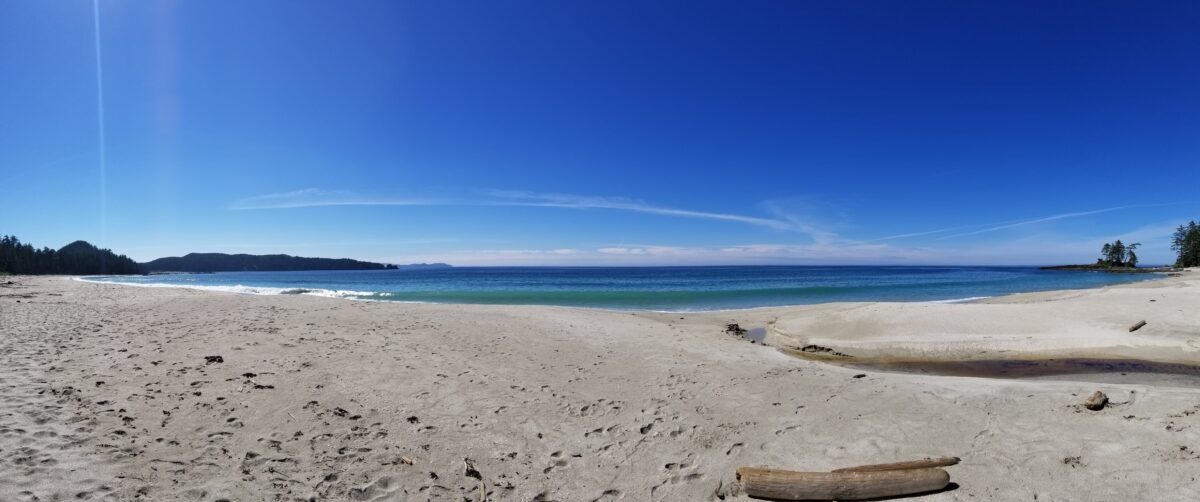
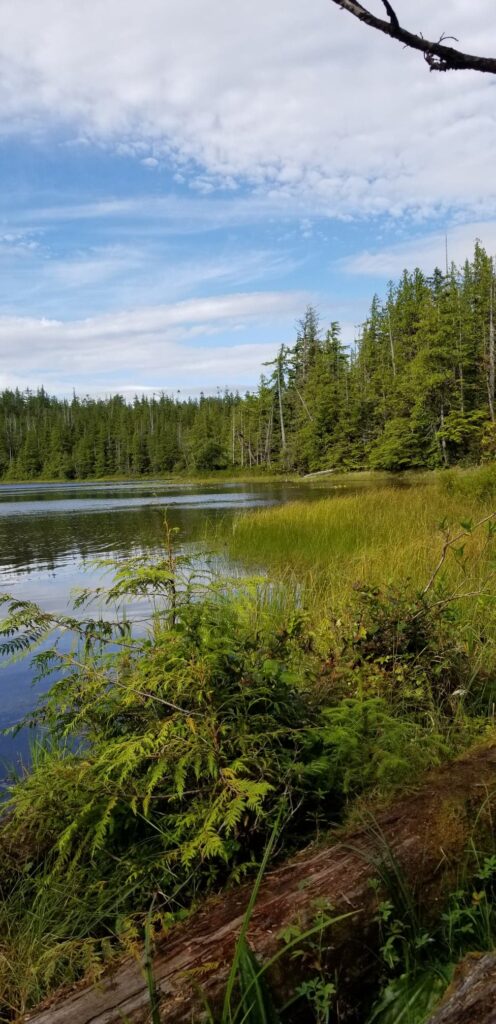
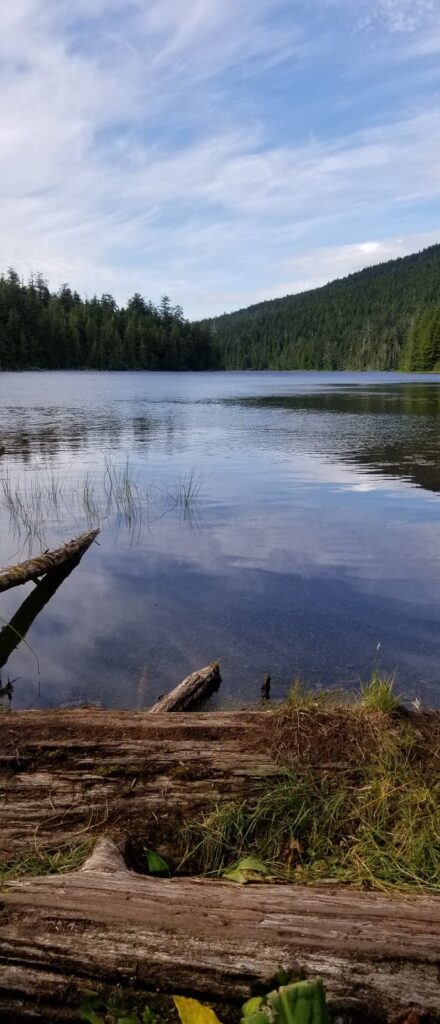
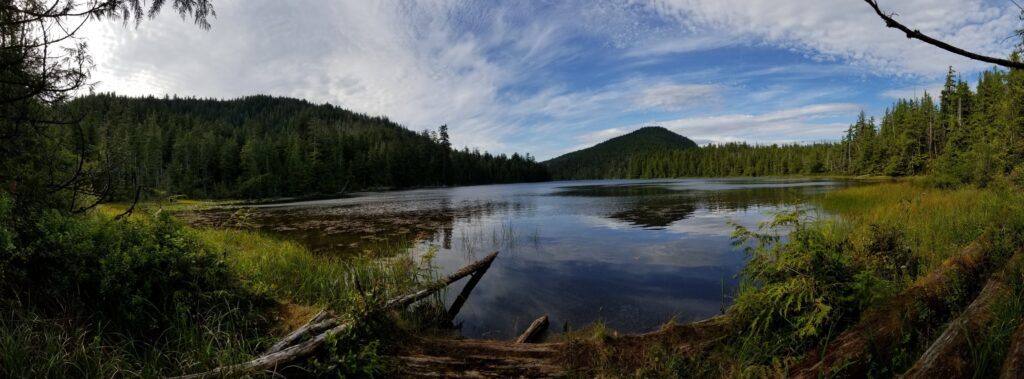
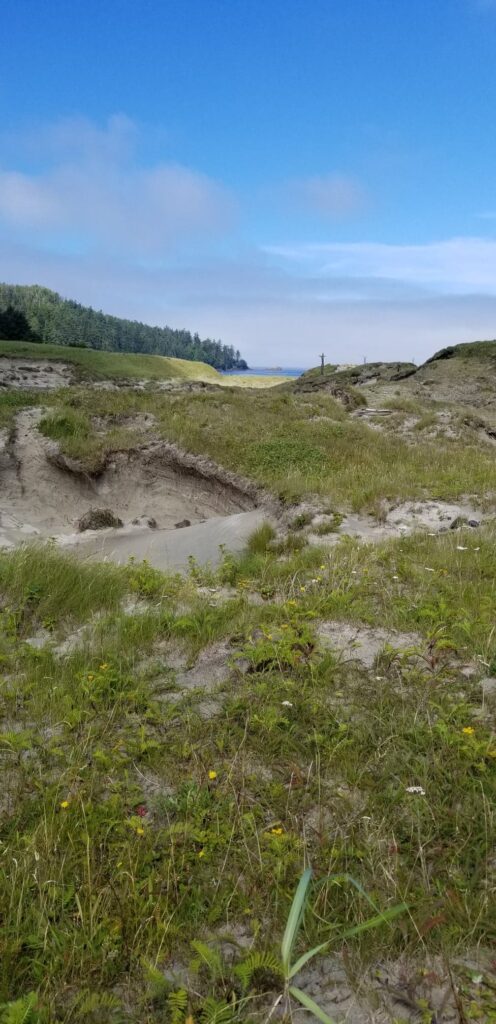
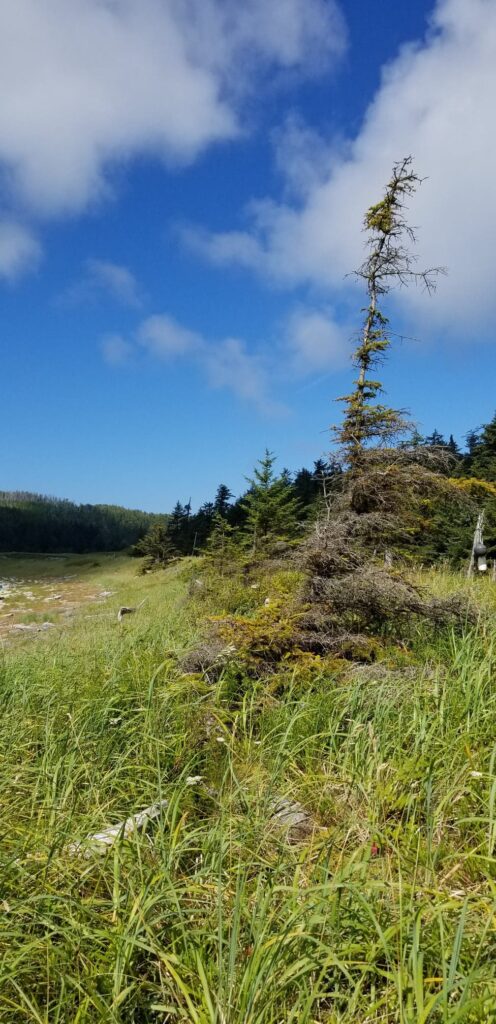
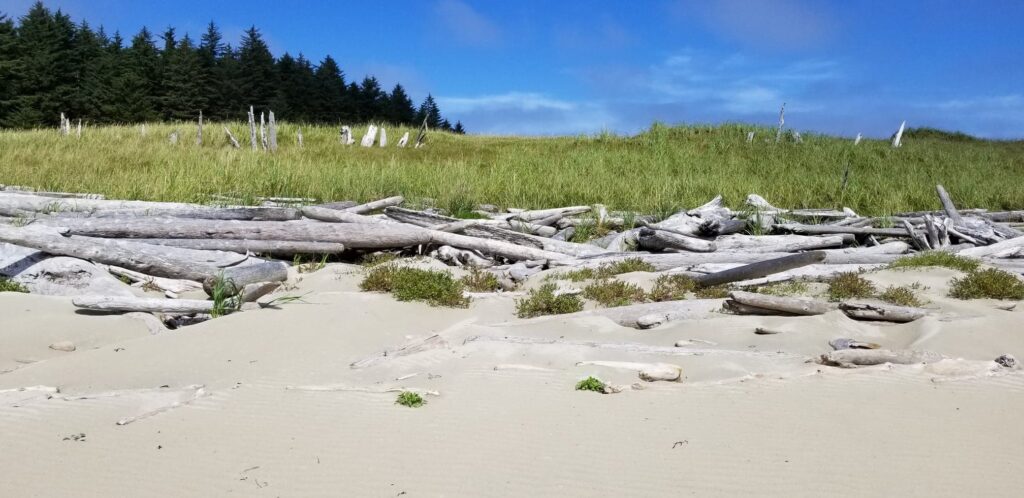
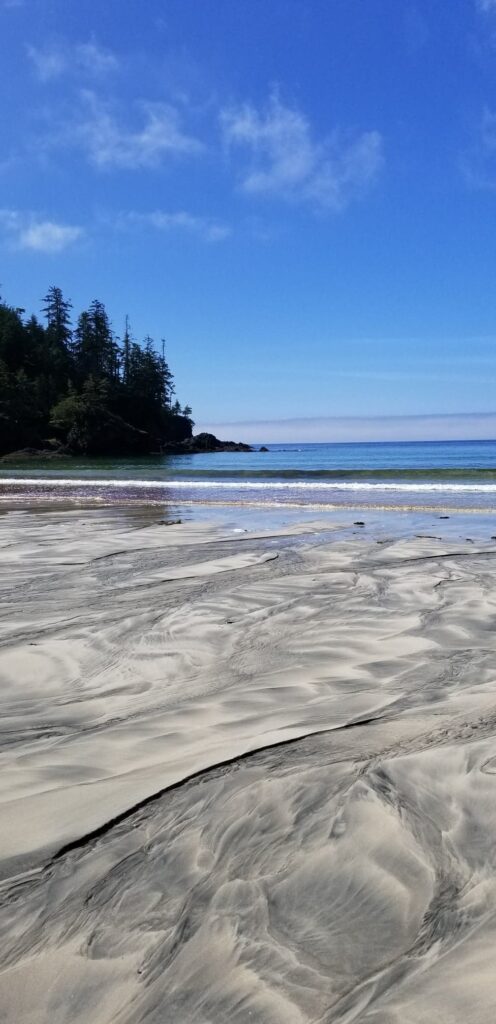
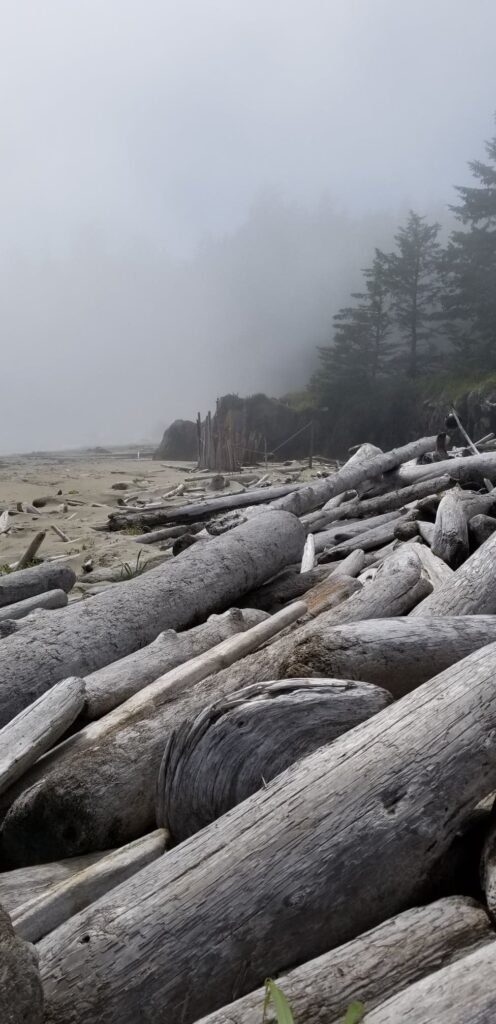
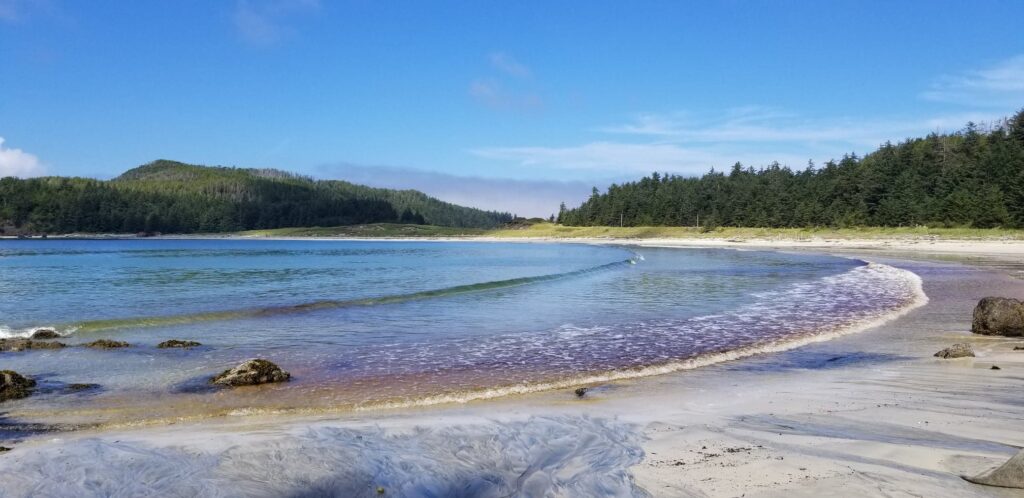
3 thoughts on “THE ROMANCE OF CAPE SCOTT PROVINCIAL PARK”
Comments are closed.